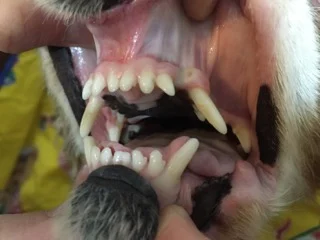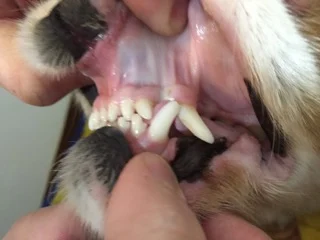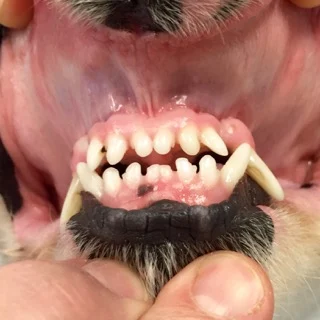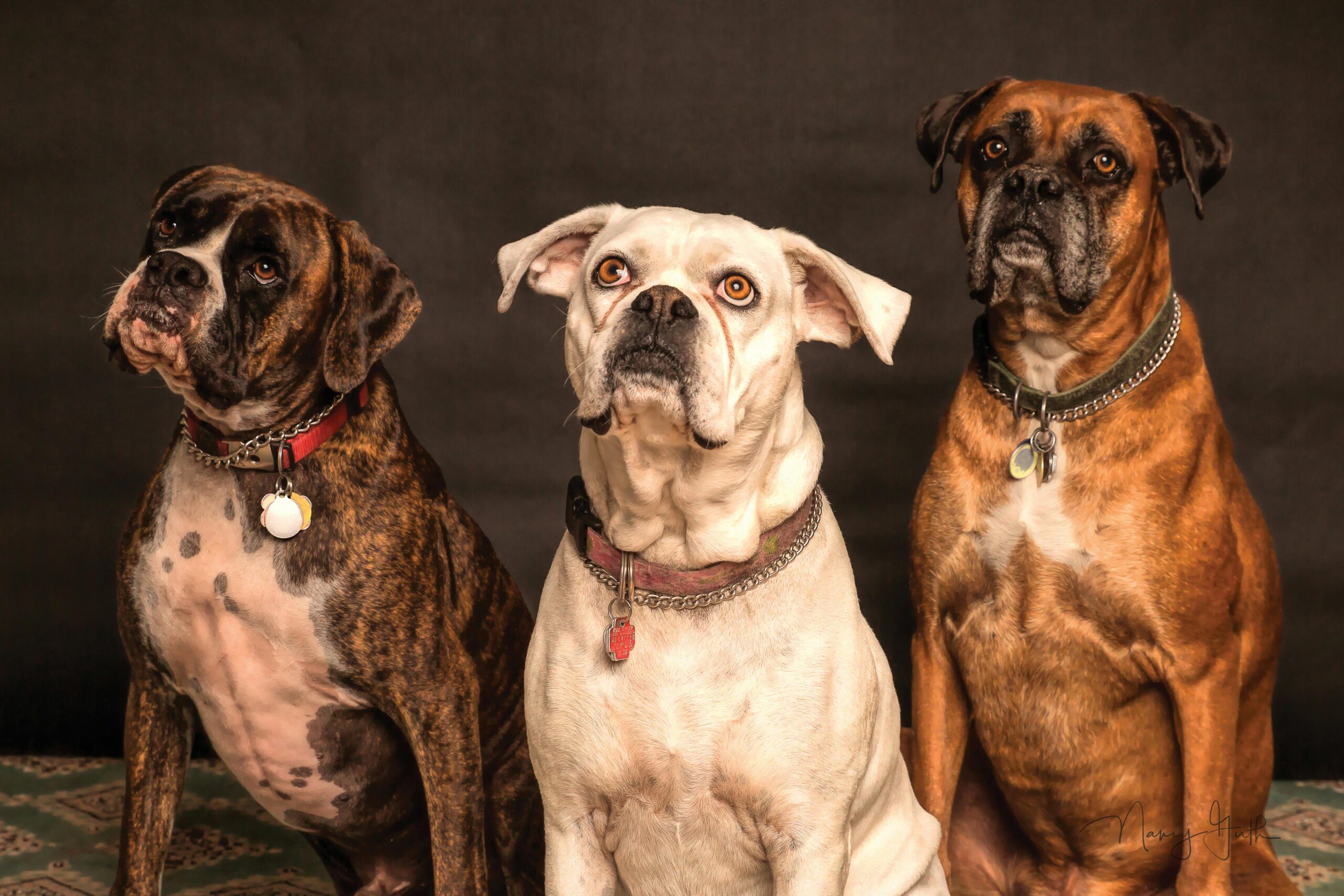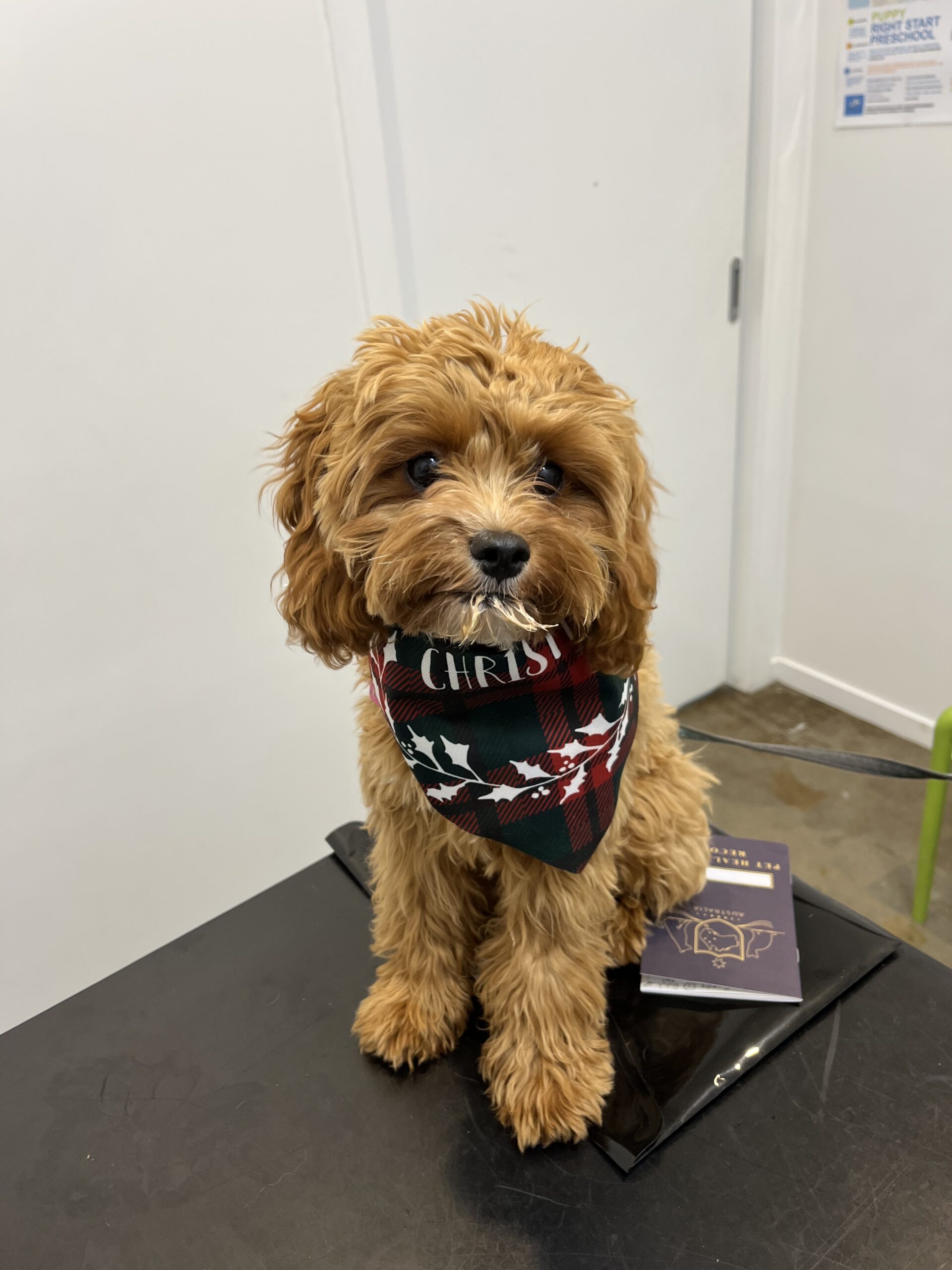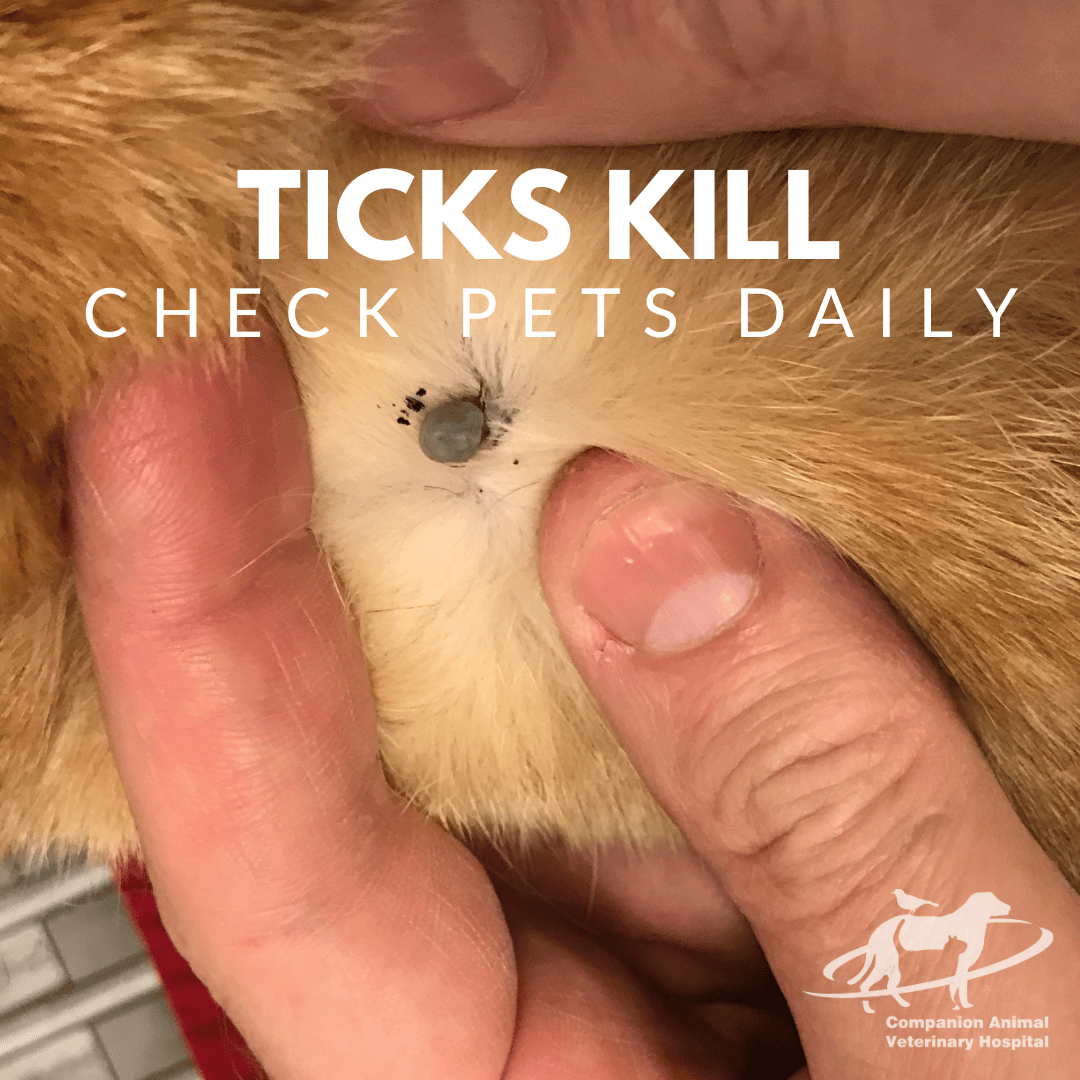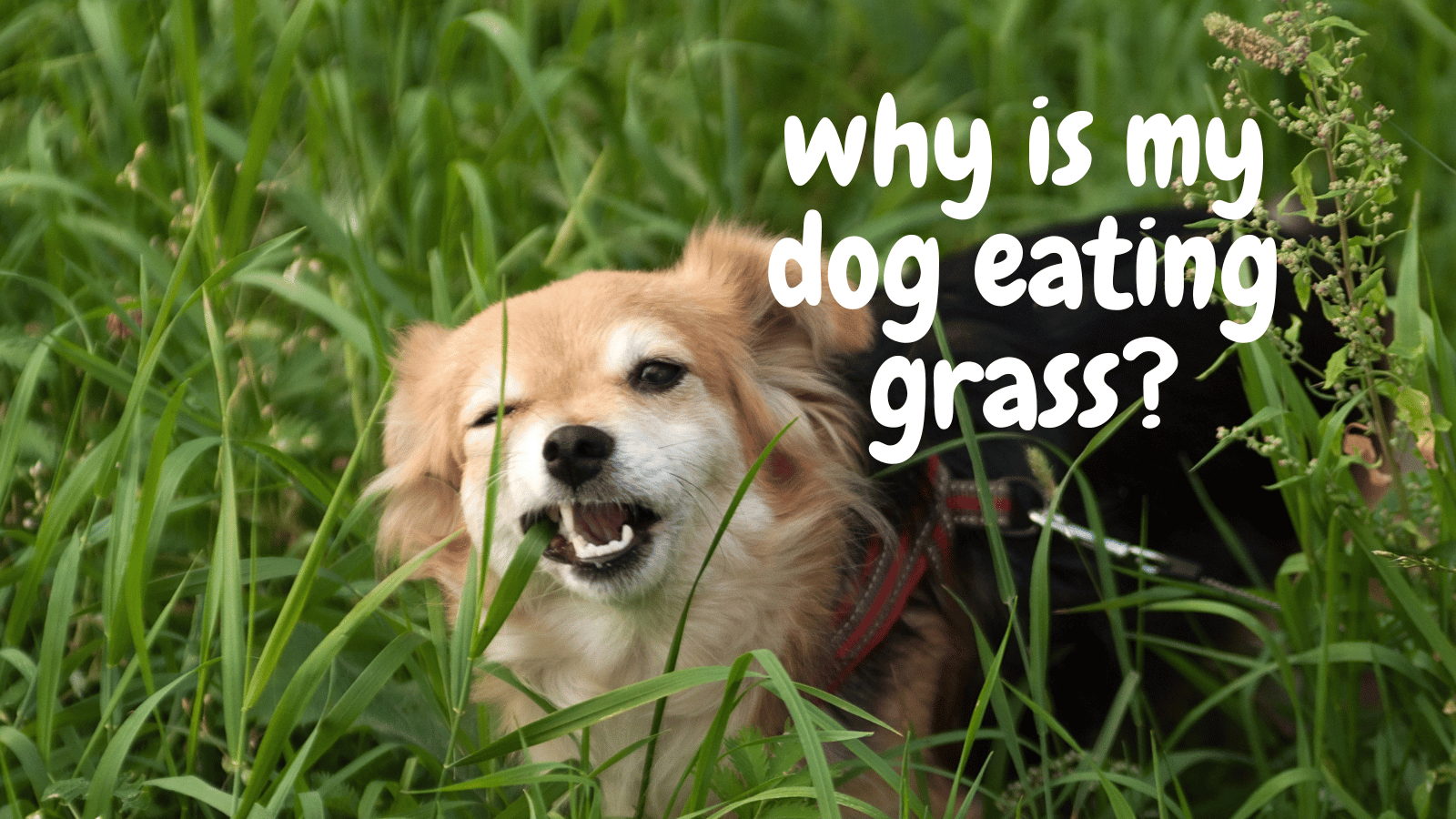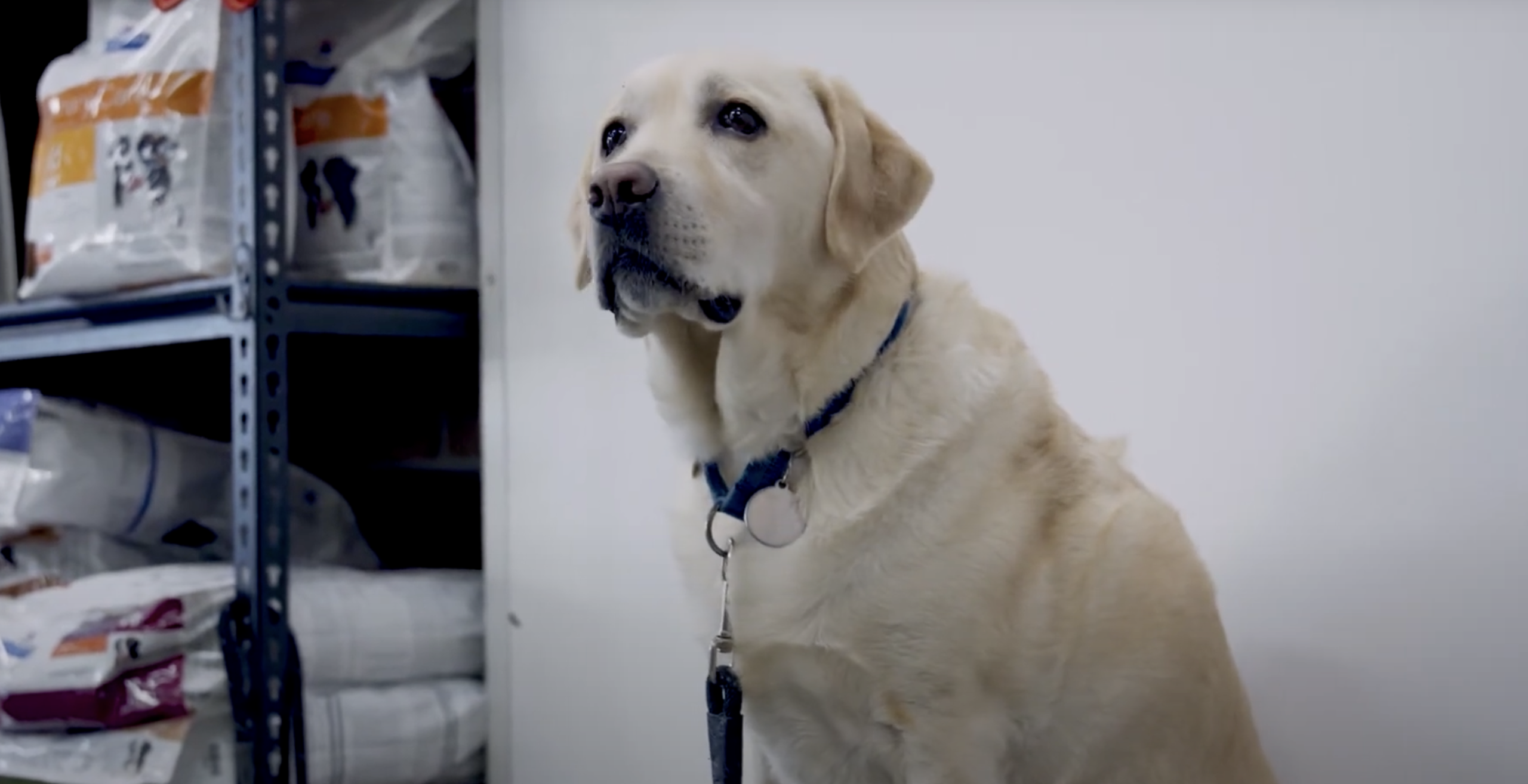Chad is a dog that came into care with Wollongong Animal Rescue Network. As part of their routine care they have a full check up and when we did that I had a look in his mouth and was greeted with the smile above.
Because of the way that Chad’s jaw had developed the canine teeth were too close together and were hitting each other. As they grew they had done their best to get out of the way of the opposing tooth and most of the time they appeared to not contact each other. When I opened his mouth though I could feel the teeth clunking past each other.
Chad wasn’t keen to have me examine these teeth as they were quite sensitive. On closer examination I could see that the lower canines had been striking the surface of the upper canines and had damaged the enamel in this area. His carer had noticed that he would only ever eat soft food. I believe that this was either:
- due to sensitivity of the upper canines because of the missing enamel
- because he was uncomfortable chewing when the teeth hit each other or
- because he was uncomfortable because of the way he had to hold his jaw to prevent the teeth hitting each other
In any case, he was experiencing pain.
The first thing we did was to take some xrays of his teeth. We needed to confirm that there was no evidence of any infection getting into the tooth through the damaged tooth.
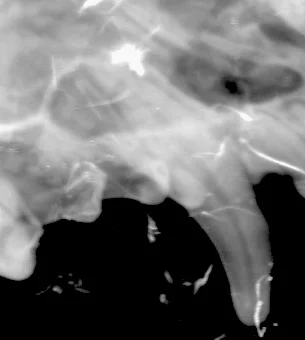
Apart from the missing enamel the teeth appeared healthy.
Shortening the lower canines
I then burred off the top of the lower canines so that when the mouth closed it no longer hit the upper canine. The top of the teeth were then sealed to protect it from bacteria and to make the surface nice and smooth.
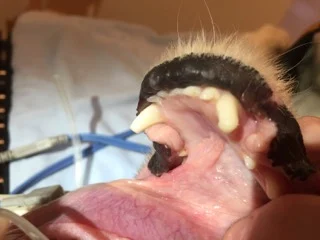
Repairing the enamel defect on the upper canines
The next step was to repair the enamel defect on the upper canines where the lower canines were previously hitting this tooth.
Composite (filling material) was applied to the tooth to fill the defect. A bright light is used to cure the material (make it go hard) and it was then polished nice and smooth.
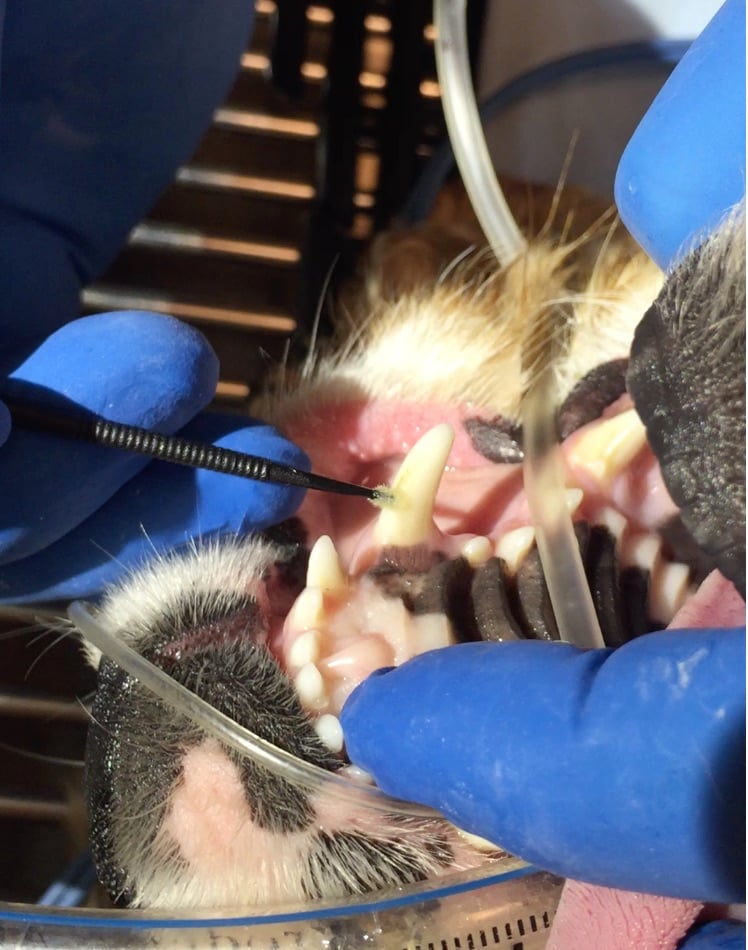
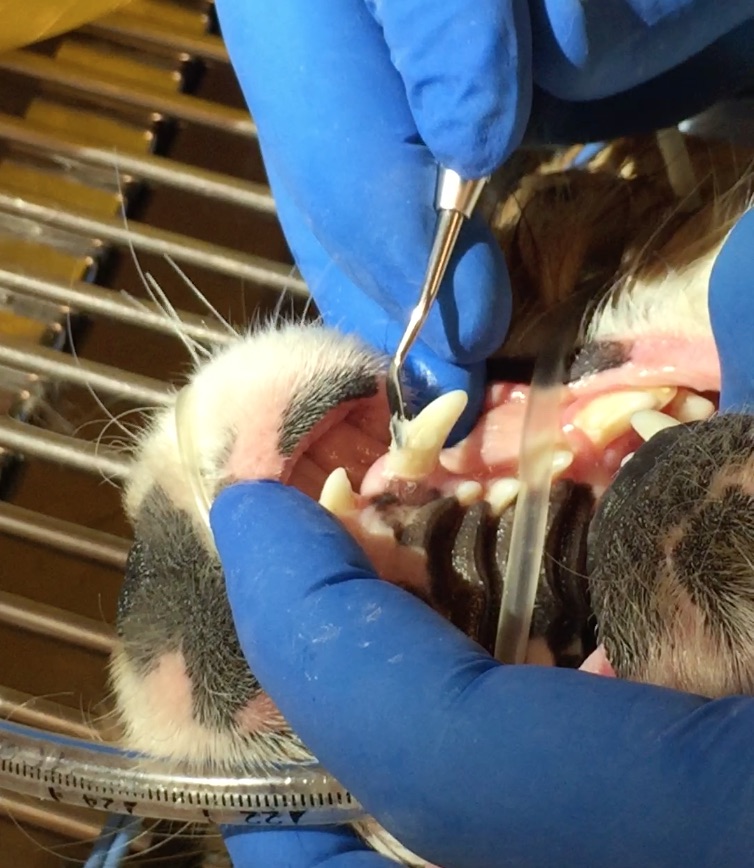
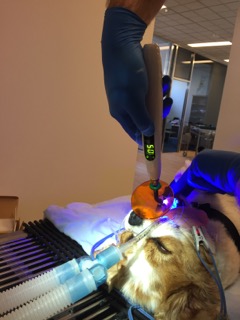
The tooth is now protected from:
- pain
- invasion by bacteria
- accumulation of plaque
The end result
Chad can now open and close his mouth without his teeth colliding. His teeth are protected and will be protected from bacterial invasion in the years to come and best of all he will be able to eat his meals pain free.
